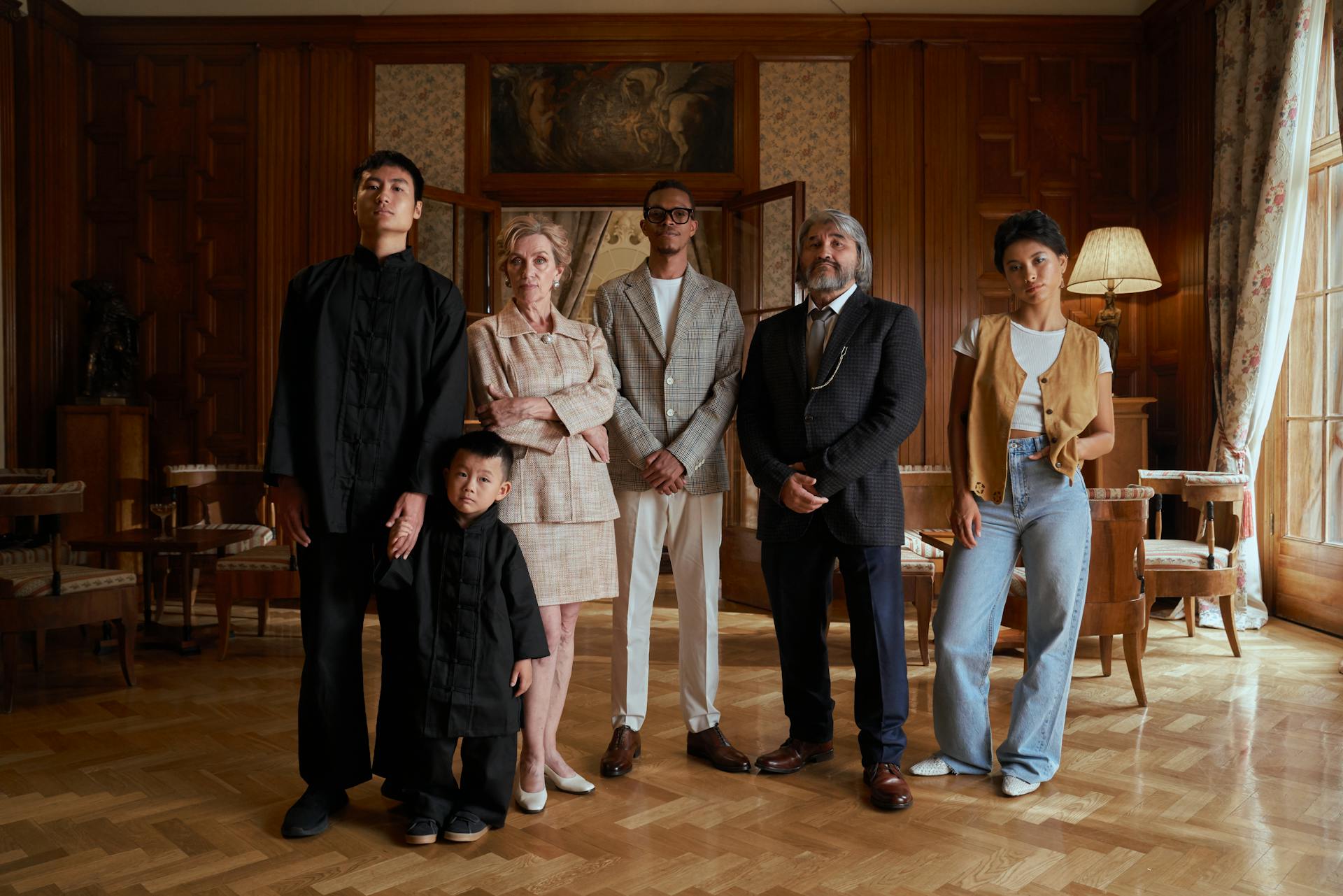
The Rothschilds are often considered one of the wealthiest families in the world, but how did they get there? The family's wealth originated in the late 18th century when Mayer Amschel Rothschild, a German Jewish banker, began building a financial empire.
Their financial prowess was largely due to their ability to navigate the complexities of European finance during a time of great upheaval. By establishing a network of branches across Europe, the Rothschilds were able to provide vital financial services to governments and merchants.
Mayer Amschel Rothschild's five sons played a crucial role in expanding the family's business, with each son taking charge of a different branch in a different European city. This strategic expansion enabled the Rothschilds to accumulate vast fortunes.
Their business acumen and strategic investments helped them weather financial storms and capitalize on opportunities, cementing their position as one of the wealthiest families in the world.
A unique perspective: List of Banking Families
The Rothschild Family
The Rothschild Family has a rich history that spans over two centuries. They first rose to prominence as a European banking family in the 1700s, with Mayer Amschel Rothschild growing up in the Jewish ghetto in Frankfurt, Germany.
Mayer Amschel Rothschild learned trading and became a dealer in rare coins, which brought him to the attention of the crown prince. He later worked for the prince and married the daughter of a money changer, having 10 children with her.
The family moved from Germany to France, Italy, Austria, and the United Kingdom, establishing branches of lenders and traders that created one of the first international banks. Nathan Mayer Rothschild, one of the successful early Rothschilds, moved to Manchester, England, to set up a textiles business and then to London to establish the N.M. Rothschild bank, which is still in operation.
Nathan Mayer Rothschild helped finance the British army in its fight against Napoleon. His involvement in the conflict was the subject of an early conspiracy theory, with some claiming that he paid to go to the Battle of Waterloo so he could profit from announcing that Britain had won the war.
Mayer Amschel Rothschild established a banking business in his native Frankfurt in the 1760s. He was born in 1744 and raised in a ghetto in Frankfurt, where Jews were legally required to live in small communities.
Rothschild learned about the business world at an early age, working with his father's business of coins, silk, and other items. He became an orphan at the age of 12 after the death of his mother and his father's death before her.
Here are some significant years in the history of the Rothschild Family:
- 1763: Mayer Amschel Rothschild joins his brothers in the family business
- 1769: Prince Wilhelm bestows Mayer with the title of ‘Court factor’
- 1789: Nathan Rothschild starts a textile business in Manchester
- 1810: Nathan establishes N M Rothschild in London
- 1824: Nathan and Moses Montefiore come together to start Alliance Assurance Company
- 1835: Nathan acquires rights to mercury mines in Spain
- 2019: N M Rothschild and Sons report revenue of €1.87 billion
The Rothschild Origins
Mayer Amschel Rothschild was born in 1744 in the German Duchy of Hesse in a ghetto in Frankfurt, where Jews were legally required to live in small communities.
He grew up in a large house with about 30 other family members and learned about the business world at an early age, working with his father's business of coins, silk, and other items to survive.
Mayer Rothschild became an orphan at the age of 12 after the death of his mother, and his father had died before. He decided to take an internship with a banking firm in Hanover, Germany, where he learned the ins and outs of banking and foreign trade.
Rothschild returned to his hometown, Frankfurt, at the age of 19 and continued the commodities and wealth trade in his father's early days, eventually providing other banking services to Prince Wilhelm and several aristocrats.
A unique perspective: Hoare Banking Family
In 1770, Rothschild married and had ten children, five sons, and five daughters, which would eventually lead to the establishment of the Rothschild banking empire.
Here's a brief overview of the significant years in the history of the Rothschild family:
- 1763: Mayer Amschel Rothschild joins his brothers in the family business
- 1769: Prince Wilhelm bestows Mayer with the title of ‘Court factor’
- 1789: Nathan Rothschild starts a textile business in Manchester
- 1810: Nathan establishes N M Rothschild in London
- 1824: Nathan and Moses Montefiore come together to start Alliance Assurance Company
- 1835: Nathan acquires rights to mercury mines in Spain
- 2019: N M Rothschild and Sons report revenue of €1.87 billion
The Rothschild family's ability to pass on their wealth to the next generation was a key factor in their success, with Mayer Rothschild managing to establish an international business family with his five sons expanding the business throughout Europe.
See what others are reading: Family Business Accountants
Rothschild Wealth
The Rothschild family's wealth is truly staggering. Their annual revenue for Rothschild & Co. was €1,589 million in the fiscal year 2016, a testament to their continued success.
The family's net worth is over $500 billion, making them one of the wealthiest families in history. This is a staggering amount of wealth that has been accumulated over centuries.
Mayer Amschel Rothschild, the first Rothschild patriarch, was a shrewd businessman who learned trading and eventually became a dealer in rare coins. This occupation brought him to the attention of the crown prince, for whom he later worked.
The Rothschilds' Fortune
The Rothschilds' family net worth is over $500 billion in 2023, making them one of the wealthiest families in history.
Their wealth is a result of their successful banking and financial institutions, which have been in operation for centuries.
The family's annual revenue from Rothschild & Co. was €1,589 million in the fiscal year 2016.
Nathan Mayer Rothschild's involvement in the British army's fight against Napoleon helped finance the war effort and brought significant profits to the family.
The family's financial success has enabled them to invest in various companies and industries, including media and textiles.
Here are some key milestones in the Rothschild family's financial history:
- 1789: Nathan Rothschild starts a textile business in Manchester
- 1810: Nathan establishes N M Rothschild in London
- 2019: N M Rothschild and Sons report revenue of €1.87 billion
The family's wealth has been passed down through generations, with many family members employed directly by their corporations or investing in industries that generate wealth.
The Rothschild in the 21st Century
The Rothschild family is still quite active today, with many members living in Europe, Israel, and the United States. Emma Rothschild is a notable example, serving as a history professor at Harvard and an honorary professor at Cambridge.
Family property has been divided among descendants and heirs, resulting in a diverse range of industries being represented. Some Rothschild-owned financial institutions continue to operate in Europe, such as N. M. Rothschild & Sons Limited in the United Kingdom.
The Rothschild family's holdings are spread across various sectors, including financial services, real estate, mining, energy, and charitable work. They also own a significant number of wineries in different parts of the world, with locations in North America, Europe, South America, South Africa, and Australia.
Other Rich Families
There are other wealthy families in the world that rival the Rothschilds in terms of their net worth. The Walton family, owners of Walmart, have an estimated net worth of over $200 billion.
The Walton family's wealth is largely due to their control of Walmart, the world's largest retailer. They have been able to accumulate their wealth through smart business decisions and a keen understanding of the retail market.
The Walton family's net worth is significantly less than the Rothschilds, but still impressive.
Recommended read: Rothschild House Worth
Walton
The Walton family is one of the richest families in the world, with an estimated wealth of $259.7 billion. They're also the owners of Walmart, the world's largest company by revenues.
Each of the three top-ranking Waltons - Jim, Rob, and Alice - is worth around $57 billion, ranking them 19th, 20th, and 21st on Forbes' billionaire list. They're a powerful trio in the business world.
Walmart was founded by Sam Walton in Arkansas in 1962 and has since grown into a retail behemoth. It's the world's largest company by revenues, with a whopping $611 billion in revenues in fiscal year 2022.
The company operates over 10,500 retail stores worldwide, with 5,215 of those stores located in the United States as of December 24, 2023. That's a lot of stores!
Here's a breakdown of the top-ranking Waltons:
Wertheimer
The Wertheimer family is a name you might not know, but they're a force to be reckoned with in the world of luxury goods.
Alain and Gerhard Wertheimer, the brothers behind the family's fortune, are co-owners of the company that their grandfather staked with the founder of Chanel.
They're ranked 41st on the Forbes billionaires list, each with a net worth of $31.6 billion as of December 25, 2023.
The Wertheimer brothers' family legacy is a testament to the power of smart business decisions and a little bit of luck.
Rothschild Business and Finance
The Rothschild family's business and finance ventures are a fascinating topic. They established one of the first international banks, with branches in Germany, France, Italy, Austria, and the United Kingdom.
Mayer Amschel Rothschild, the first Rothschild patriarch, learned trading and became a dealer in rare coins, which brought him to the attention of the crown prince. He eventually worked for the prince and married the daughter of a money changer.
Nathan Mayer Rothschild, Mayer's son, played a crucial role in the family's business success. He moved to Manchester, England, to set up a textiles business and then to London to establish the N.M. Rothschild bank, which is still in operation today.
The Rothschilds own and sit on the boards of various companies, including hedge funds and media outlets. Nathaniel Rothschild was the co-chair of the hedge fund Atticus Capital from 1996 until it closed in 2009.
Here are some key years in the history of the Rothschild family's business and finance ventures:
- 1763: Mayer Amschel Rothschild joins his brothers in the family business
- 1769: Prince Wilhelm bestows Mayer with the title of ‘Court factor’
- 1789: Nathan Rothschild starts a textile business in Manchester
- 1810: Nathan establishes N M Rothschild in London
- 1824: Nathan and Moses Montefiore come together to start Alliance Assurance Company
- 1835: Nathan acquires rights to mercury mines in Spain
- 2019: N M Rothschild and Sons report revenue of €1.87 billion
The Rothschild family's business and finance ventures have spanned centuries and multiple continents. Today, their holdings are spread across various industries, including financial services, real estate, mining, energy, and charitable work.
Rothschild Challenges and Secrets
The Rothschilds have faced their fair share of challenges and secrets over the years. One of the earliest conspiracy theories about the family involved Nathan Mayer Rothschild's alleged involvement in the Battle of Waterloo, with some claiming he paid to have news of the British victory announced so he could profit from it.
Nathan Mayer Rothschild also faced criticism for helping to finance the British army during the war, which some saw as a way to gain an advantage over his competitors. He was a shrewd businessman, and his involvement in the conflict was likely a calculated move to secure his family's financial interests.
Despite these challenges, the Rothschilds continued to thrive and expand their business empire.
A unique perspective: Nathan Rothschilds
The Slowdown
The Rothschild family's financial success began to slow down in the 20th century.
In 1900, the Naples branch became extinct after the last male heir died without children, leaving its fortune to the Paris branch.
The Austrian branch was doing well until Hitler came to power, forcing them to sell their banking operation for a fraction of its true worth in 1938.
Most Rothschilds escaped with liquid assets, but one was captured and released after paying a $21 million ransom, effectively bankrupting the Austrian Rothschilds.
The Nazis seized all their mansions, businesses, and art, and a few years later, the Paris branch suffered the same fate.
The Nazis personally went to the Paris branch to observe and select items from the Rothschild collections, seizing a total of 5,003 objects.
The vast majority of these items were never returned, and the French Rothschilds were left to restore their businesses after the war.
The French socialists nationalized their bank in 1981, leaving only the English branch with its fortune intact by the end of the 20th century.
Statistically, 90% of wealthy families lose their fortunes by the third generation due to a lack of financial responsibility.
Keeping It Secret
The Rothschilds' secrecy is a fascinating topic. They established a complex network of shell companies starting off in Switzerland, but it's unclear where it ends.
Their complex financial structures were designed to keep their fortune hidden. Mayer Amschel Rothschild's occupation as a dealer in rare coins brought him to the attention of the crown prince, who he later worked for.
The family's wealth has declined significantly over time. Today, the first Rothschild on the Forbes list of billionaires appears at number 822, Jeff Rothschild, who has no blood connection to the family.
Nathan Mayer Rothschild helped to finance the British army in its fight against Napoleon. The Rothschilds' involvement in this conflict was the subject of an early conspiracy theory about the family.
The Rothschilds' wealth is now largely tied to an asset management company that manages other people's money. This is a far cry from their former glory as one of the richest banking families of their day.
The family's complex financial structures have made it difficult to track their wealth. It's surprising that it's taken so long to uncover the truth about their current financial situation.
Sources
- https://www.investopedia.com/articles/insights/052416/top-10-wealthiest-families-world.asp
- https://www.newsweek.com/rothschild-family-companies-net-worth-1993369
- https://theenterpriseworld.com/the-rothschild-family/
- https://www.ft.com/content/f159e16a-3610-11df-aa43-00144feabdc0
- https://medium.com/bc-digest/rothschilds-1dbaefcec1cc
Featured Images: pexels.com


